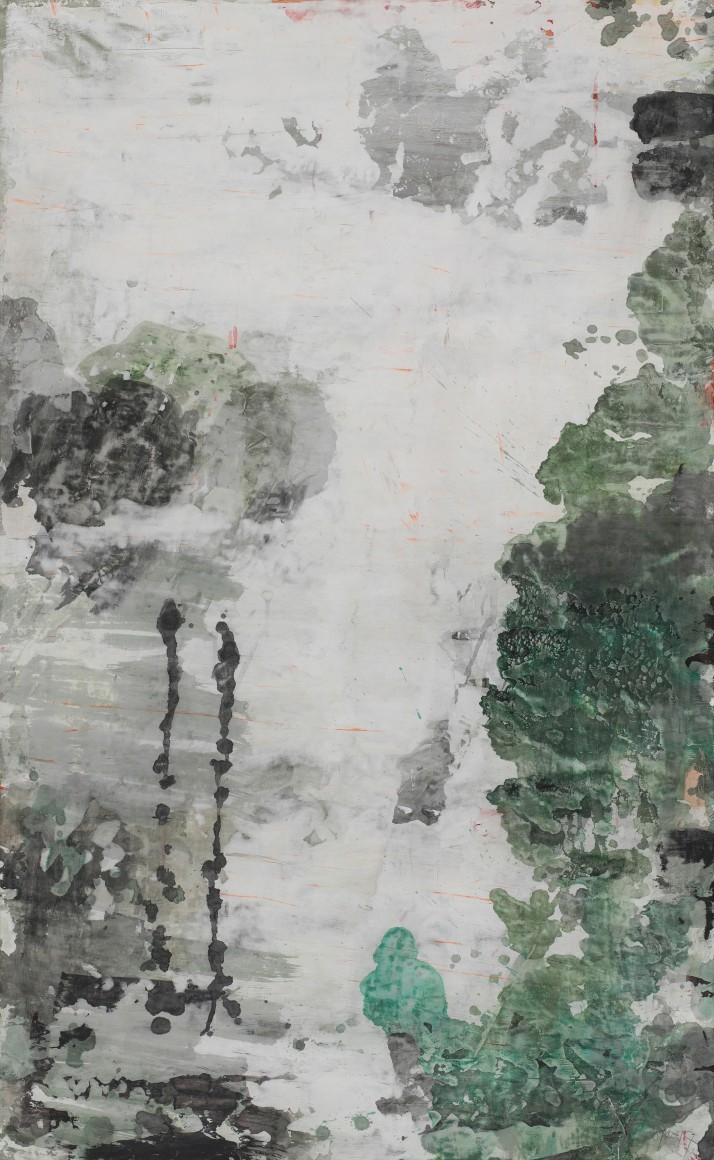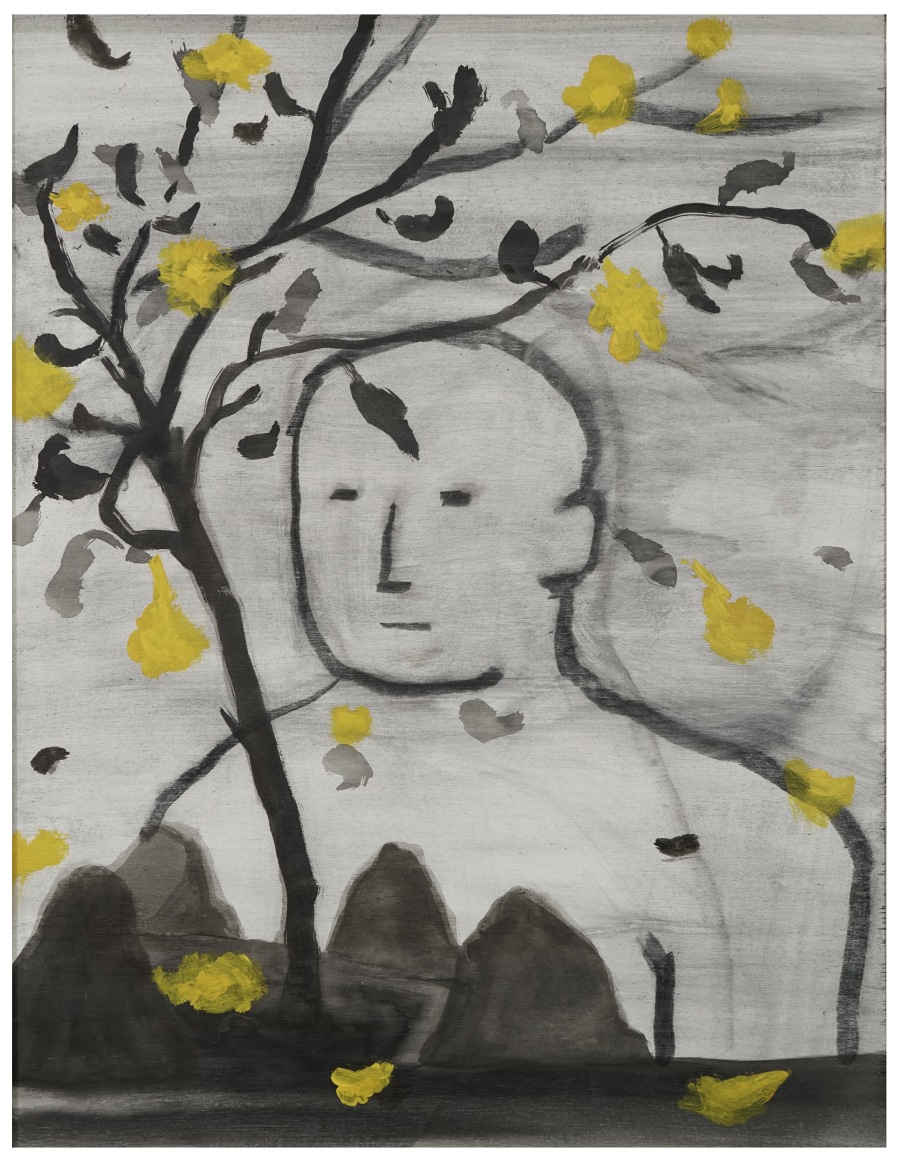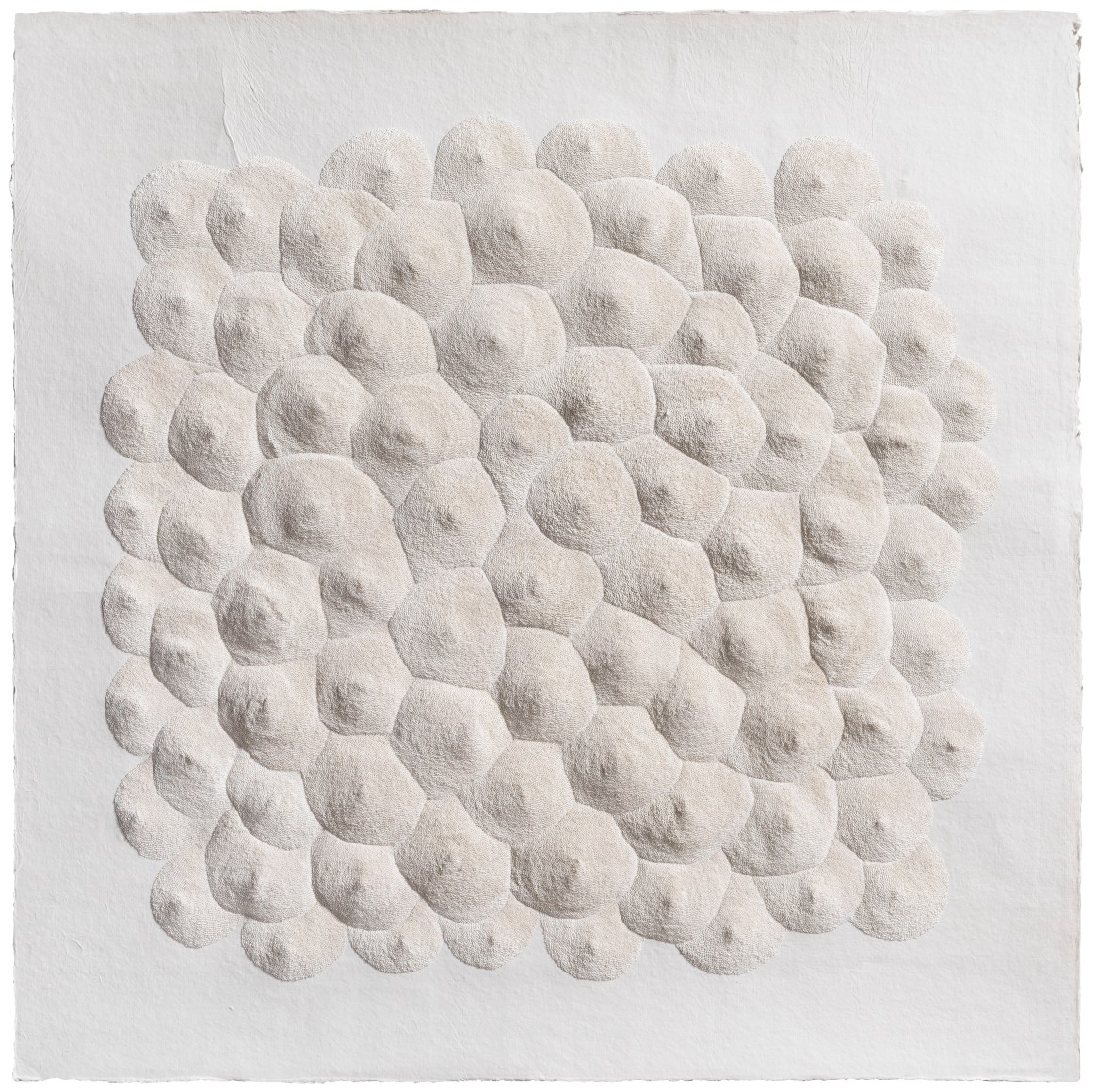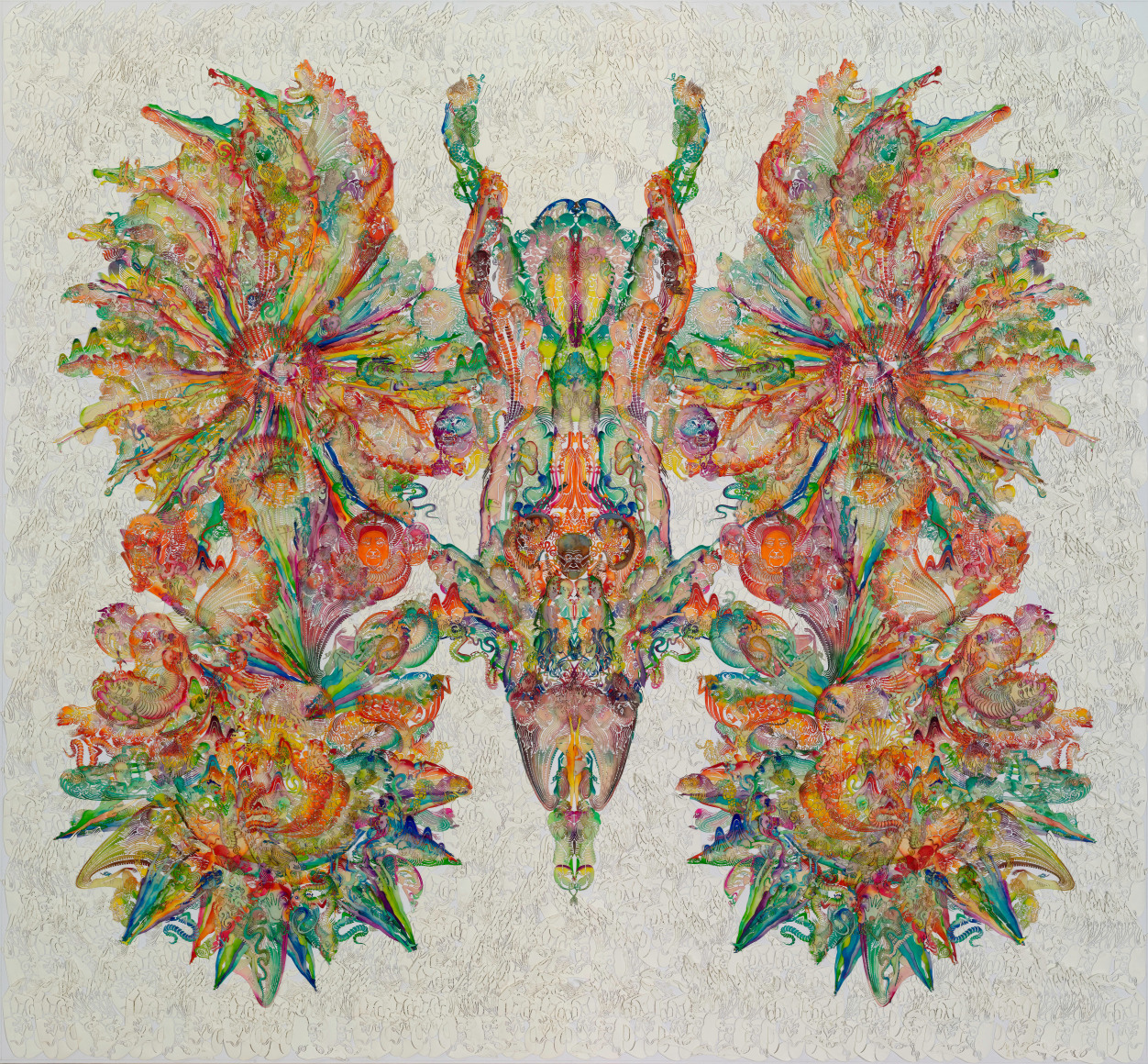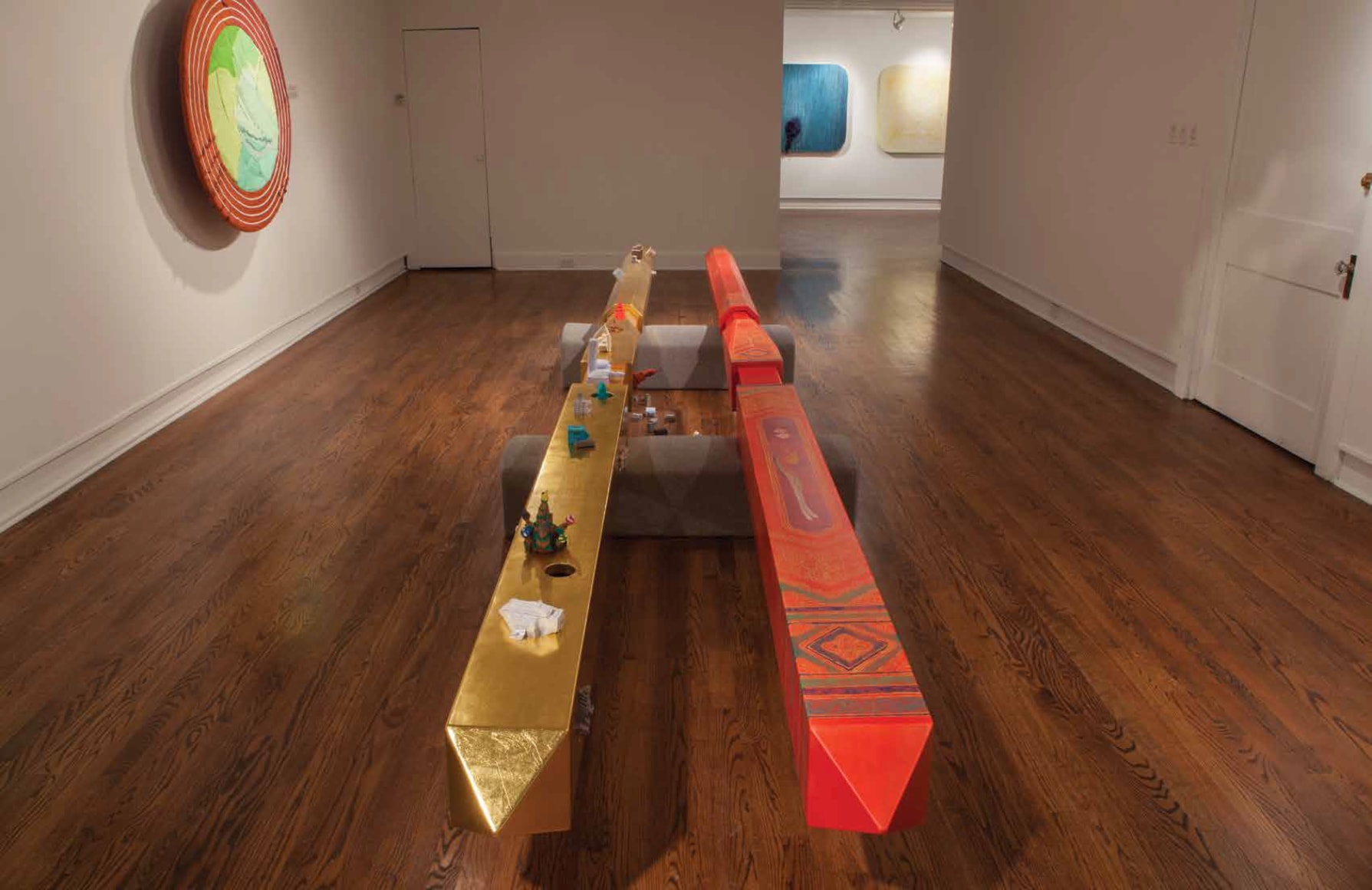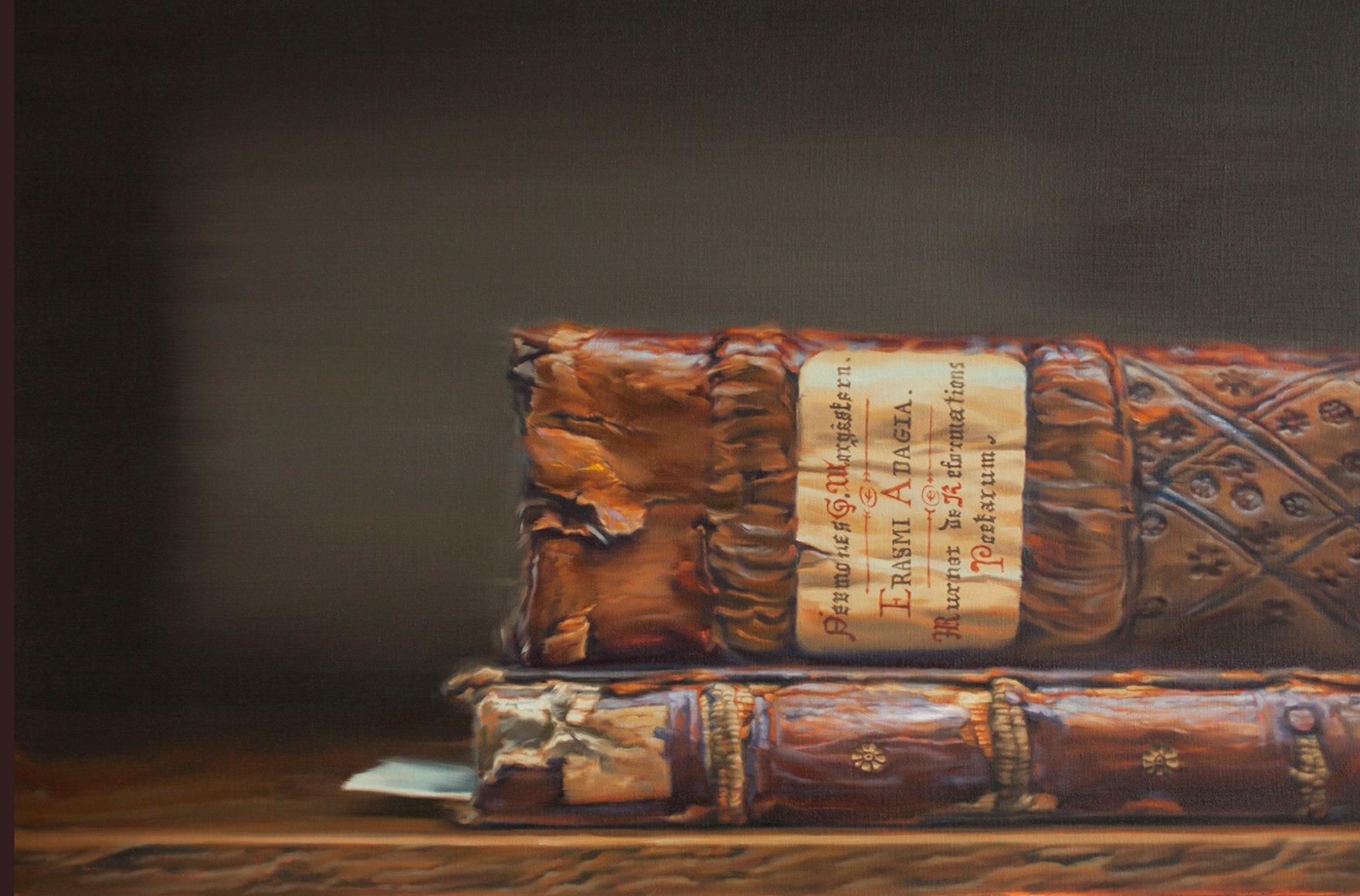Chambers Fine Art is pleased to present the work of three generations of Chinese artists – Shang Yang, Yan Shanchun, Song Dong & Yin Xiuzhen, Xiaoze Xie, Lam Tung-pang, Wu Jian’an and Fu Xiaotong – who are deeply engaged with different aspects of traditional Chinese culture while finding ways envigorate it through their highly individual practices.
Dominating the booth is a giant pair of chopsticks and paintings of cross-sections of chopsticks by the artistic duo Song Dong & Yin Xiuzhen. Key figures in the experimental art movements that flourished in China in the 1990s, both artists worked independently in a wide variety of media but it was not until 2002 that they agreed to collaborate for the exhibition Chopsticks at Chambers Fine Art, New York. In addition to works that they made separately, they also agreed to produce a number of works jointly, among them Chopsticks symbolizing the closeness of their union on their tenth wedding anniversary. The artists returned to the theme in subsequent exhibitions at Chambers Fine Art, The Way of Chopsticks (2006) and The Way of Chopsticks III (2011). The sculpture that will shown in Hong Kong was previously exhibited at the Philadelphia Art Alliance in 2013, as part of Song Dong & Yin Xiuzhen’s duo exhibition The Way of Chopsticks.
Recent works by Shang Yang (b.1942) and Yan Shanchun (b.1957) are noteworthy for their technical bravura and their relationship to earlier periods in the artists’ oeuvres. In spite of the demands of his distinguished academic career, Shang Yang has produced a substantial body of work that continues to evolve stylistically. Two major series, the Great Landscapes and the ongoing Dong Qichang Project, simultaneously reveal his veneration for the tradition of Chinese landscape painting and his despair at the state of the environment in the twenty-first century. One of the most important episodes in Shang Yang’s formative years was his experimentation with different materials in 1988-89, a practice that has re-emerged in his work since 2000. Shang Yang’s works of 2016 are his most abstract to date, developing an approach that first appeared in his exhibition at the Suzhou Museum of Art in 2013.
After a decade spent concentrating on scholarly and academic studies Yan Shanchun returned to painting in 2005 and since 2010 has been active as a printmaker. West Lake in Hangzhou, one of the most famous and beautiful landscapes in China, provides the thematic content of both his paintings and prints. West Lake has become an increasingly disembodied presence in Yan’s paintings over the last decade, culminating in the works of 2016 and 2017. Rejecting the traditional media of oil on canvas or ink on paper, Yan evolved a hybrid technique in which the image emerges from multiple layers of sanding the layers of plaster powder on which he paints, allowing only glimpses of landscape motifs to emerge.
In complete contrast are the oil paintings of Xiaoze Xie (b. 1966). After finishing his studies in China, he moved to the United States. As a realist painter by vocation, Xie found a way to combine his passionate interest in Chinese history and current world events with more formal concerns by focusing on the materials stored in archives and library stacks as the subject matter of his paintings. The first painting in the Library (Western Books) Series dates from 1993 but the theme has still not been exhausted. In late 1994 when he returned to China for the first time since moving to the United States, he began working on the Chinese Library Series which is also still ongoing. Ten years later in 2005 a change of emphasis began with the Museum Library Series in which the treatment of the photographic sources is generally more specific.
Lam Tung-pang (b. 1978) currently lives and works in Hong Kong. A question he posed in 2011 – “What does tradition mean today? How is it perceived and what does it contribute to our contemporary life?” – may be seen as the unifying characteristic of his varied practice in which references to classical tradition are subverted by commonplace objects and modern-day materials such as plywood replace Xuan paper. For his latest series, Meaningless, Lam revisits the visual language of traditional Chinese landscape, finding particular inspiration in Ming dynasty woodblock prints.
Wu Jian’an (b.1980) is a unique figure in contemporary Chinese art, having made the traditional Chinese medium of paper-cut into the basis of a multi-media practice over the last decade. Inspired by historical precedents as varied as the Dunhuang frescoes and shadow puppets, Wu jian’ans paper cuts have become increasingly complex, multiple layers of writhing figures and abstract forms, hand-dyed and dipped in wax, creating images of dazzling complexity. In 2017 he was one of the artists representing China in the Venice Biennale.
Fu Xiaotong (b.1976) studied under Wu Jian’an at the Central Academy of Fine Arts, Beijing. During this period, she evolved an idiosyncratic working method in which, using thick sheets of handmade Xuan paper, she perforates the surface with tens of thousands of pinpricks made at different angles and from both sides of the paper. Initially the focus of these labor-intensive works was on the evocation of mountainous landscapes and other landscape motifs but in recent works the imagery has become more abstract, the sculptural treatment of the paper surface suggesting organic forms.


